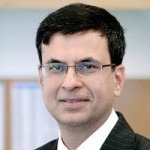About Arul Murugan
Arul Murugan studied in Tamilnadu agriculture university, Coimbatore and an MBA in Agri-business at Anna university. He worked in an export- oriented food processing industry for 7 years from sourcing to processing vegetables and exporting it to the European market. He along with his college mate – Arun Prakash started this venture – Snack Experts.
About Snack Experts
Both the founders felt that there was a huge gap in the snack market. The traditional business model was in the B2C – Made to a Stock model where the manufacturer supplied to the retailers. The biggest issue in snacks was that there was no predictability when the consumer would pick up the products from the shelf. So, the manufacturers always focused on extending the shelf life of the products by adding preservatives. Every company focussed on increasing shelf life in multiple methods. Arul felt that a Made to Order business model will reduce the preservatives in the product. He also felt that it will not suit a distribution model and he felt that he can supply these products to the customers directly.
Both the founders searched through a few business models in the US. They found those companies are doing well and a few companies have even raised funds.
Business Pivots
Initially they began with a B2C (3 months subscription) model, they launched a website where anyone can place an order and get it delivered. The delivery for the subscription model was a snack home delivered in the beginning of the month. In spite of the customers liking the snack, Arul found that the renewal of subscriptions was not happening. When he spoke with a few customers, he found that the customers had to wait for 6 to 7 days to get the snack delivered.
In 2016, there was an accidental opportunity to pivot. One of their customers spoke to them and suggested that they supply the same products to their company. The company had 1000+ employees. The company was willing to give the order at the end of each month and deliver the products based on schedules. Both the founders felt that this was acceptable to their norms and the vision of the company. They then did customer validation with around 50 other customers and found that this model had potential.
The model worked because the companies had a monthly budget for snacks for each employee. The company was also keen on giving fresh snacks to their employees. The choice of selection of snacks could be decided based on the monthly budget. They will give the choices and the companies will accept and the production will begin.
So, they pivoted from a B2C e-commerce business model to a B2B institutional business model. There was no difference in production and product choices. The only difference was in the serving SKUs. Since the P.O was decided based on the monthly budget allotted to employees. the model in the B2C was based on the weight and the prices will change constantly. The model in the B2B was a fixed budget per employee per month. The B2B customer also had issues in terms of quality, variety in the snacks given to them.
Initial sales and marketing approach
This was only done by sampling. They reached out to founders and CEOs. The first customer was Ramco systems. This was a lighthouse reference customer. They went to the group companies and then to similar companies and offered sampling the snacks to the founders or to the senior employees. The customers were happy that they could provide healthy snacks and still offer variety to their employees. The snacks were also a feel-good factor for their employees. There was no organized company in this space and the sale happened only through distributors.
Building a sales team in the earlier days
On a custom weight model, the front-end people who went to sales were not able to close the sales. This is because the sales team could not explain the problems faced by production and sell the multiple SKUs, multiple weights per order, customized packaging concept. Even making the salespeople remember the price was tough. The salespeople were used to sell so many numbers of pieces in a 10 Rs package. However, the model they were selling was based on how many pieces they will get for INR 10.
Snack Experts went through a loss in the early days. It was a bit difficult to convert the box pushing salespeople to be consultative salespeople.
So, the founders began hiring fresh engineering graduates. They worked out to be well. They understood from day one on what the selling process was.
Objections faced
Arul mentioned that there was no category in the market like this. The companies were used to procure the snacks from the same caterer that did the breakfast, lunch and dinner. In some case, they procured the snacks from a distributor. Arul recalls that the concept of an exclusive snack vendor was new. Since they understood this need from Ramco, they began thinking on their mind.
The other companies were not that keen on adapting this model. When Arul analyzed it, the found that RAMCO sale was possible because the top management supported the initiative. However, with similar-sized companies, they did not even reach the top management or even evangelize with the junior people
From a segment perspective, they began reaching out to companies with less than 200 employees. The commonalities were that these companies did not have a food vendor. Arul was able to sell faster in this segment. In the backend team, this was working on a fixed weight model.
The initial meetings were tough as they had to evangelize this concept to the customers. They had to fight questions the clients prefer to have one vendor and even asked Snack Experts to make food. However, Arul did not want to be a caterer. They began convincing the companies on good healthy snacks and got them to buy-in.
Things he could have done better
The founders had no sales orientation. They began with a randomly hired sales team but had no structure. They followed the traditional FMCG sales model. Though they understood the consultative model they still stuck to the traditional box pushing sales team. It did not work. For a long time, the founders could not even analyze what went wrong. They kept discussing on if the mistake was with the sales team or with themselves.
Arul also quotes his second area of improvement. He feels that he could have also build a distribution model which would have helped him reach -out to a larger audience. He feels that he could have done it for schools, could have created a channel on the internet or physical. With the offices shut down now because of COVID, his earlier business model might get disrupted because of “work from home” and “no new hires”. So, he feels that some online channel would help them in getting more customers.
Arul’s Tips to entrepreneurs
Arul says that the start-up founders may think that they have a good product and hope this will sell by itself. That is a myth. There needs to be a clear sales process. It can be the founder of a few people in the early days who will sell. However, the absence of the sales process will only lead to inefficiencies and time to learn. The team can scale only with a clear sales process drawn out.
How big are they today?
Snack Experts is close to 4Cr INR revenue today. They are doubling year on year. They have around 20 people of which 6 of them are in sales. They have around 60 B2B customers in Chennai and in Bangalore. They got 2 rounds of funding, first from IIT B SINE, the second round was from a family office to the tune of ½ Mn $
About Arul Murugan
Arul Murugan studied in Tamilnadu agriculture university, Coimbatore and an MBA in Agri-business at Anna university. He worked in an export- oriented food processing industry for 7 years from sourcing to processing vegetables and exporting it to the European market. He along with his college mate – Arun Prakash started this venture – Snack Experts.
About Snack Experts
Both the founders felt that there was a huge gap in the snack market. The traditional business model was in the B2C – Made to a Stock model where the manufacturer supplied to the retailers. The biggest issue in snacks was that there was no predictability when the consumer would pick up the products from the shelf. So, the manufacturers always focused on extending the shelf life of the products by adding preservatives. Every company focussed on increasing shelf life in multiple methods. Arul felt that a Made to Order business model will reduce the preservatives in the product. He also felt that it will not suit a distribution model and he felt that he can supply these products to the customers directly.
Both the founders searched through a few business models in the US. They found those companies are doing well and a few companies have even raised funds.
Business Pivots
Initially they began with a B2C (3 months subscription) model, they launched a website where anyone can place an order and get it delivered. The delivery for the subscription model was a snack home delivered in the beginning of the month. In spite of the customers liking the snack, Arul found that the renewal of subscriptions was not happening. When he spoke with a few customers, he found that the customers had to wait for 6 to 7 days to get the snack delivered.
In 2016, there was an accidental opportunity to pivot. One of their customers spoke to them and suggested that they supply the same products to their company. The company had 1000+ employees. The company was willing to give the order at the end of each month and deliver the products based on schedules. Both the founders felt that this was acceptable to their norms and the vision of the company. They then did customer validation with around 50 other customers and found that this model had potential.
The model worked because the companies had a monthly budget for snacks for each employee. The company was also keen on giving fresh snacks to their employees. The choice of selection of snacks could be decided based on the monthly budget. They will give the choices and the companies will accept and the production will begin.
So, they pivoted from a B2C e-commerce business model to a B2B institutional business model. There was no difference in production and product choices. The only difference was in the serving SKUs. Since the P.O was decided based on the monthly budget allotted to employees. the model in the B2C was based on the weight and the prices will change constantly. The model in the B2B was a fixed budget per employee per month. The B2B customer also had issues in terms of quality, variety in the snacks given to them.
Initial sales and marketing approach
This was only done by sampling. They reached out to founders and CEOs. The first customer was Ramco systems. This was a lighthouse reference customer. They went to the group companies and then to similar companies and offered sampling the snacks to the founders or to the senior employees. The customers were happy that they could provide healthy snacks and still offer variety to their employees. The snacks were also a feel-good factor for their employees. There was no organized company in this space and the sale happened only through distributors.
Building a sales team in the earlier days
On a custom weight model, the front-end people who went to sales were not able to close the sales. This is because the sales team could not explain the problems faced by production and sell the multiple SKUs, multiple weights per order, customized packaging concept. Even making the salespeople remember the price was tough. The salespeople were used to sell so many numbers of pieces in a 10 Rs package. However, the model they were selling was based on how many pieces they will get for INR 10.
Snack Experts went through a loss in the early days. It was a bit difficult to convert the box pushing salespeople to be consultative salespeople.
So, the founders began hiring fresh engineering graduates. They worked out to be well. They understood from day one on what the selling process was.
Objections faced
Arul mentioned that there was no category in the market like this. The companies were used to procure the snacks from the same caterer that did the breakfast, lunch and dinner. In some case, they procured the snacks from a distributor. Arul recalls that the concept of an exclusive snack vendor was new. Since they understood this need from Ramco, they began thinking on their mind.
The other companies were not that keen on adapting this model. When Arul analyzed it, the found that RAMCO sale was possible because the top management supported the initiative. However, with similar-sized companies, they did not even reach the top management or even evangelize with the junior people
From a segment perspective, they began reaching out to companies with less than 200 employees. The commonalities were that these companies did not have a food vendor. Arul was able to sell faster in this segment. In the backend team, this was working on a fixed weight model.
The initial meetings were tough as they had to evangelize this concept to the customers. They had to fight questions the clients prefer to have one vendor and even asked Snack Experts to make food. However, Arul did not want to be a caterer. They began convincing the companies on good healthy snacks and got them to buy-in.
Things he could have done better
The founders had no sales orientation. They began with a randomly hired sales team but had no structure. They followed the traditional FMCG sales model. Though they understood the consultative model they still stuck to the traditional box pushing sales team. It did not work. For a long time, the founders could not even analyze what went wrong. They kept discussing on if the mistake was with the sales team or with themselves.
Arul also quotes his second area of improvement. He feels that he could have also build a distribution model which would have helped him reach -out to a larger audience. He feels that he could have done it for schools, could have created a channel on the internet or physical. With the offices shut down now because of COVID, his earlier business model might get disrupted because of “work from home” and “no new hires”. So, he feels that some online channel would help them in getting more customers.
Arul’s Tips to entrepreneurs
Arul says that the start-up founders may think that they have a good product and hope this will sell by itself. That is a myth. There needs to be a clear sales process. It can be the founder of a few people in the early days who will sell. However, the absence of the sales process will only lead to inefficiencies and time to learn. The team can scale only with a clear sales process drawn out.
How big are they today?
Snack Experts is close to 4Cr INR revenue today. They are doubling year on year. They have around 20 people of which 6 of them are in sales. They have around 60 B2B customers in Chennai and in Bangalore. They got 2 rounds of funding, first from IIT B SINE, the second round was from a family office to the tune of ½ Mn $






